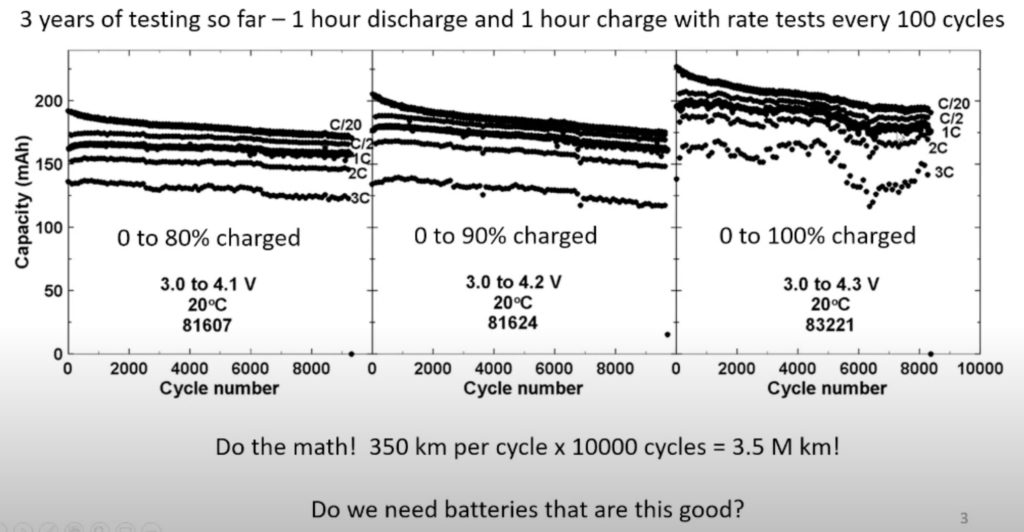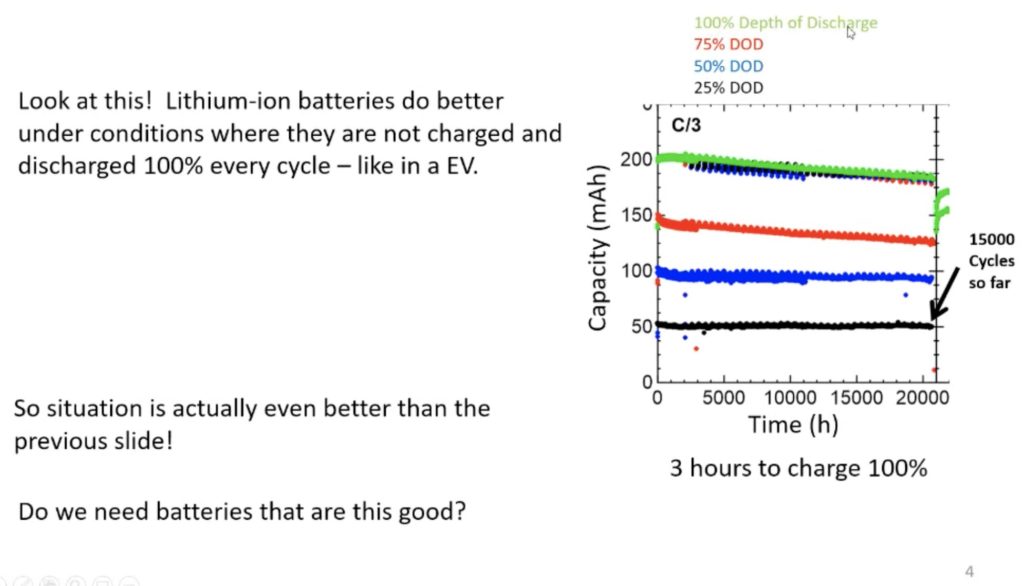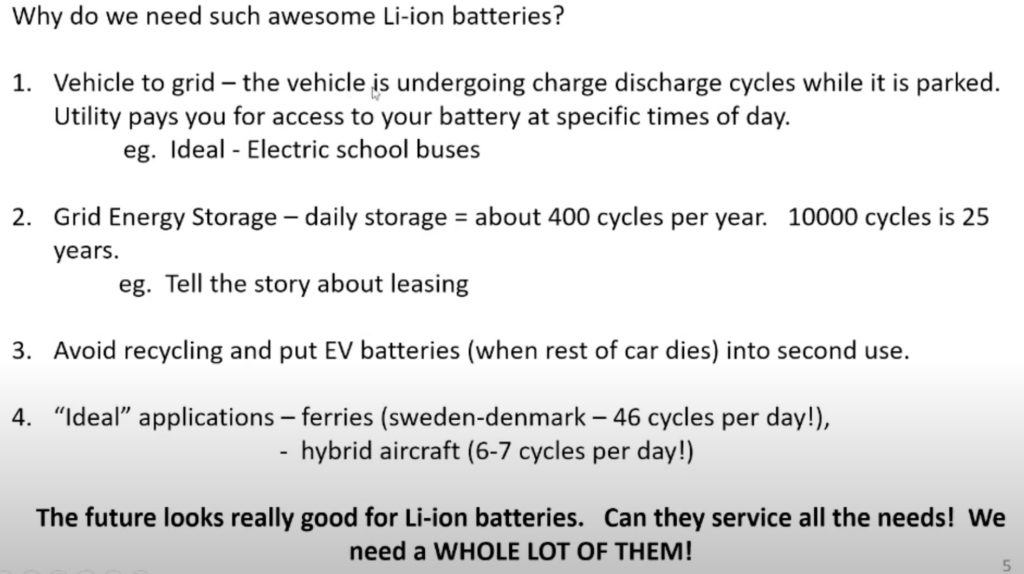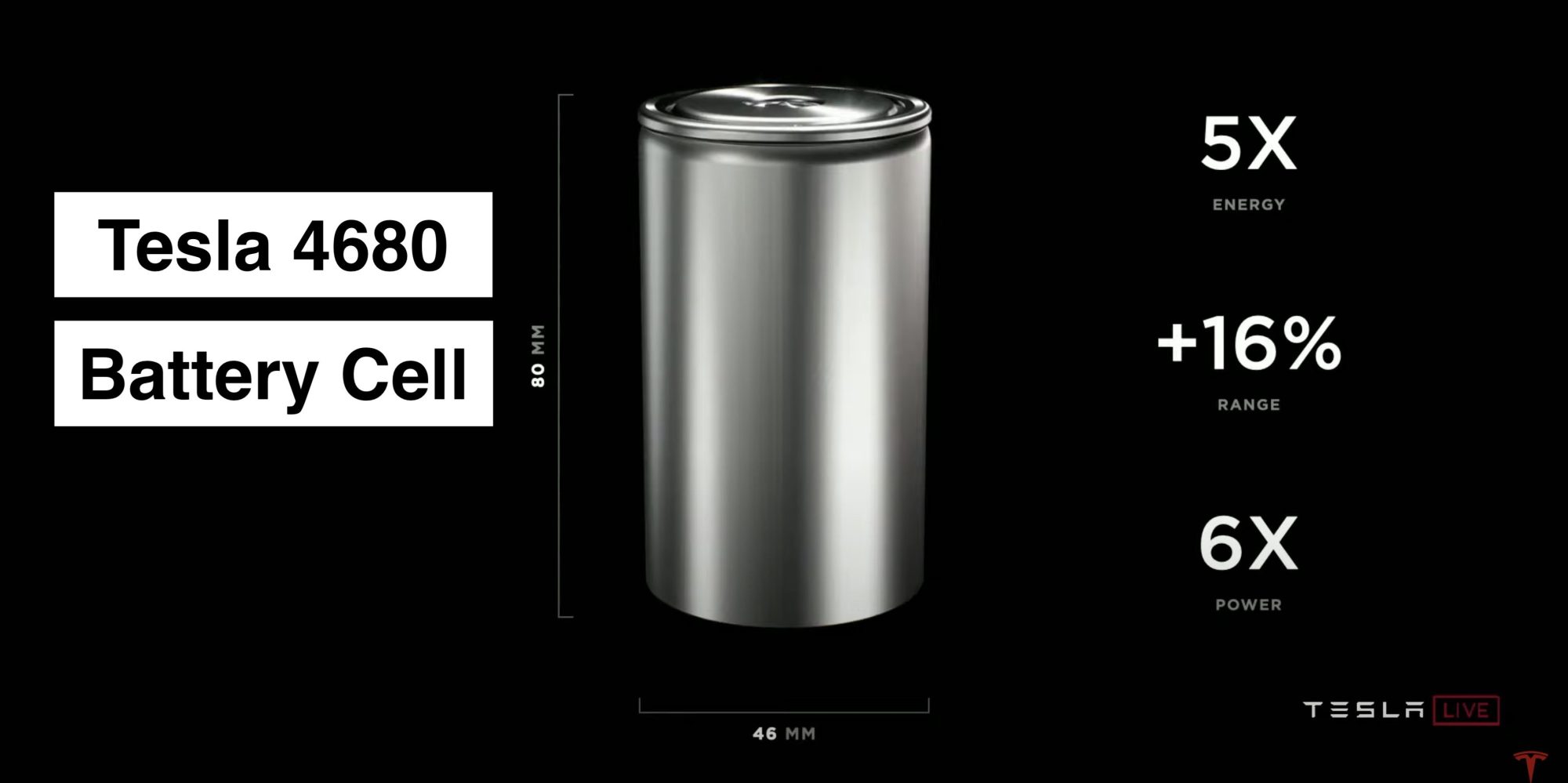The Tesla research team, led by Jeff Dahn, has updated their work with new generations of batteries. A new type of cell that will allow battery life to be shot far beyond the most optimistic expectations so far.
In its latest presentation, the Tesla team has shown some work in the laboratory where the new cells have already passed almost three years of testing and 10,000 charge and discharge cycles, hardly noticing any degradation at this time. This data opens the door to figures of at least 15,000 charge and discharge cycles, which would mean useful lives of at least 2 million miles in an average car.

One of the essential parts of these works is the cells, when kept within a load rate of between 25% and 50% of their capacity, they have shown that even with the passage of tens of thousands of cycles suffered hardly any degradation. Something that on paper would allow them to continue working for a much more significant amount of time or cycles.

But even with a 100% charge and discharge, the process where the cell is brought to its maximum capacity and discharged to the minimum, which is not recommended due to its impact on its useful life, we see how in this scenario, the cells hardly lose any capacity at all after 15,000 cycles and two and a half years of testing. Without a doubt, the most impressive graphic of the entire presentation and that we see in the image below.

The question is whether the “million-mile” batteries were no longer enough for cars that with regular use, these would exceed the useful life of the vehicle itself. The Dahn team responds that these advances will open up new possibilities in areas such as stationary storage, batteries that back up the electricity grid, as well as applications such as cars connected to the grid itself, V2G systems, where until now, Tesla had been somewhat skeptical precisely because of the degradation of the constant charge and discharge.
It will also reduce the environmental impact of the batteries themselves, which will continue working once they have finished their use in a vehicle and will not have to be recycled for many years. Some storms that can be reused and support the electrical network can also help in electrifying other types of vehicles, such as ships, trains, or airplanes.
Some work to improve the useful life that is also accompanied by the constant search for cost reduction, which gives us a preview of how things will change in a few years when we have batteries several steps ahead of the current ones, with more capacity, much longer service life, and lower prices thanks to the increasingly strong economy of scale.

